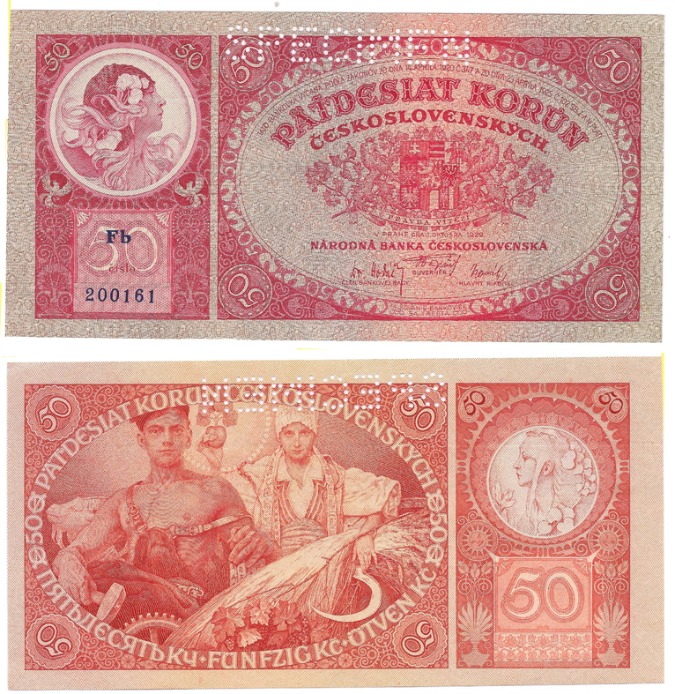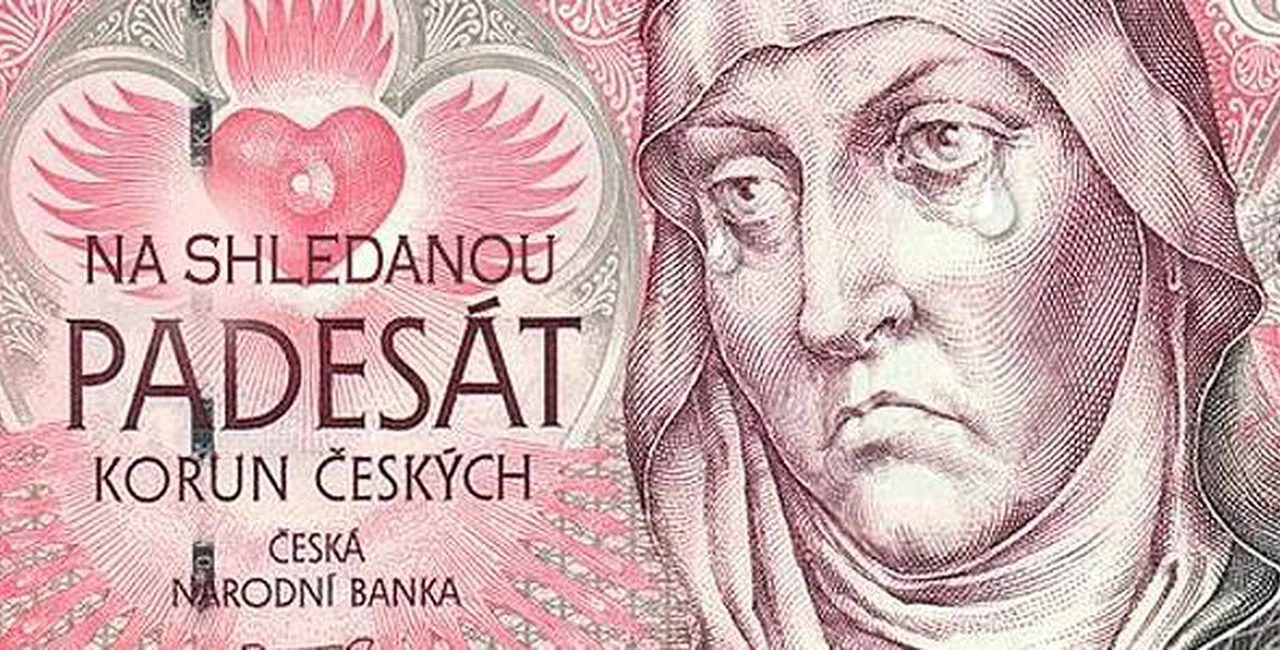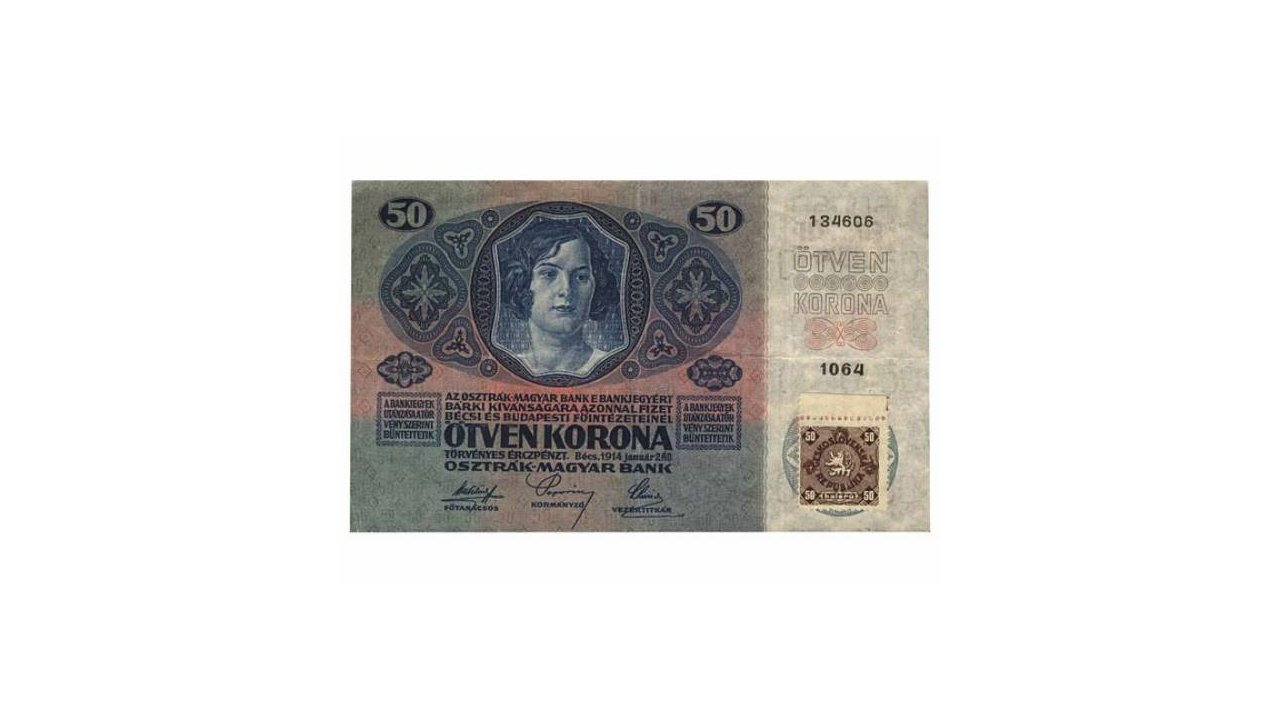She was a princess of Bohemia who eschewed arranged marriage to found the hospital of St. Francis.
Though Agnes died in 1282, she was still venerated by Christians around the world more than 700 years later. She was honored in 2011, the 800th anniversary of her birth, as the Saint of the Overthrow of Communism, with a year dedicated to her by Catholics in the Czech Republic.
PARTNER ARTICLE
Agnes is a featured figure in the “The Dinner Party” an installation piece by the artist Judy Chicago, represented as one of the 999 names on the Heritage Floor.
She is also the face that appears on the rosy-pink 50 CZK banknote until the Czech National Bank cast her into oblivion:
“From 1 April 2011 it will not be possible to pay for goods and services with the CZK 50 banknote. The Bank Board of the Czech National Bank (CNB) has decided to terminate the CZK 50 banknote. The note will be fully replaced in circulation by the currently used coin of the same denomination.”

Saint Agnes of Bohemia
For those who happen to have held onto those princessly paper fifties, the time has come to turn them in—March 31, 2017 marks the deadline for exchanging the notes at any of the seven branches of the Czech National Bank in Prague, Plzeň, Hradec Králové, Brno, Ostrava, České Budějovice, and Ústí nad Labem.
The CNB has been gradually replacing the 50 CZK banknotes with coins since 2006. The number of such notes in circulation fell from 40 million at the end of 2005 to 25 million at the end of 2009, while the number of 50 CZK coins in circulation increased more than nine-fold in the same period (from 5 million to 47 million).

Fifty Korun, 1929, Alfons Mucha / www.cnb.cz
According to the official CNB site, the 50-CZK note became part of the circulating currency as a treasury note in 1919, shortly after the establishment of the independent Czechoslovakia.
As a banknote it has been circulating in various versions since 1929 to the present. The longest circulation period recorded for the 50-CZK note was those issued in 1965, valid until 1991. It depicted a Red Army soldier and a partisan and was designed by Václav Fiala.
Treasury notes from the First Republic, especially those issued between 1919 and 1922, are especially prized by collectors.
CNB Bank Board member Pavel Řežábek explained that “coins tend to have a much longer useful life than banknotes, so they reduce the central bank’s direct expenditure on issuing money.”
Also known as Agnes of Prague, the Monastery of St. Agnes (Klášter sv. Anežky) is named for her sainthood; it is now a part of the National Gallery, housing its collection of Central European and Bohemian art.
Slideshow images courtesy of Czech National Bank.













 Reading time: 2 minutes
Reading time: 2 minutes 



































